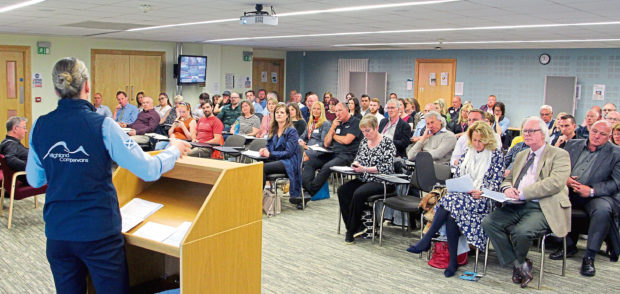The importance of tourism to the Highlands and Islands’ many small businesses and communities should never be underestimated, for it touches everyone in a way that no other industry can. In short, life would be much emptier for most of us without tourism.
But nothing ever stands still. As with countries and businesses, tourist destinations either go forward to prosper and grow, or they weaken and wither, and in 2018 tourism in Scotland took a step backwards, with both numbers and revenue down. Complacency is the great enemy and we must leave no stone unturned in our efforts to ensure that Highlands and Islands tourism remains strong and sustainable for many decades.
So it was that the FSB recently joined forces with the North Highland Initiative to hold a conference for tourism businesses in Caithness, Sutherland and Ross-shire under the banner, “sustaining and growing our industry”. Supported by UHI, the aim was to encourage the 100-strong audience – public sector representatives included – to think about how the amazing opportunities created by the NC500 can be put to best use. What can we do to boost existing businesses still further, and, very importantly given the area’s shrinking and aging population, how can we use it to encourage locally-grown, talented young people to remain in the region and young families to move here?
The main line running throughout the day was that the NC500 is in effect a shop window. Yes, some people insist on completing it in two or three days, but most don’t, and this presents businesses with a tremendous opportunity. If first-timers like what they experience – stunning scenery, comfortable accommodation, great food and drink and so on – then they are open to returning to enjoy more relaxed and richer experiences in future. This is where “slow tourism” comes in. Slow tourism is about giving people the time to soak up the atmosphere.
When thinking back to one’s most successful holidays, it’s often the people one met that stand out most, whether they were guides, receptionists and waiting staff or the general public. Of course scenery, heritage and activities are vitally important, but abiding memories often centre on people, and slow tourism works best when the welcome is warm and considerate from everyone.
However, there’s more. The more that businesses collaborate, the more likely they are to succeed. Here’s one example. Traditionally, tourism businesses on the south side of Gairloch worked largely in isolation. Then along came Nick Dent, the new owner of the Shieldaig Lodge Hotel. Recognising the advantages that collaboration can bring, Nick first upgraded the hotel and then worked with an American operator, Backroads, to develop a package that would suit Backroads’ adventurous customers. The result? The new one-day experience involves a guided walk from the hotel to the Fairy Lochs, followed by lunch in the Badachro Inn, a gin tasting from Gordon Quinn at the Badachro Distillery, a tour of Dry Island’s 19th Century cod fishery heritage from the island’s owner, Badachro creel fisherman Ian McWhinney, and a paddle back to Shieldaig Lodge with Cory Jones of the Gairloch Canoe & Kayak Centre. Not only is this collaboration proving a winner in itself, but the businesses involved are now actively seeking more ways of working together.
The acronym TEAM – Together Everyone Achieves More – might sound toe-curlingly twee, but the more one thinks about it, the more it applies to Highlands & Islands tourism.
Do watch out for more events like our conference – tourism is everyone’s business and we all have a part to play.
David Richardson, the FSB’s Highlands and Islands development manager

